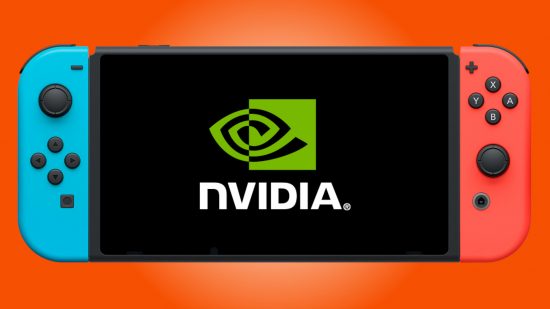It looks as if the Nintendo Switch 2 will continue to use Nvidia hardware, despite the green team’s notable absence in the handheld PC space that is largely dominated by AMD. This was by no means a given, though, as the red team apparently put in a concerted effort to win Nintendo’s favor.
The best handheld gaming PC on the market right now is the Steam Deck OLED, powered by a custom ‘Sephiroth’ APU that uses AMD Zen 2 CPU cores and RDNA 2 compute units. It should come as no surprise that it is more powerful than the now seven-year-old Switch, but this show of strength in Valve’s handheld, as well as other more-powerful devices, has apparently not been enough to pull Nintendo away from Nvidia.

According to Nvidia sources speaking to YouTuber Moore’s Law Is Dead, “AMD bid against [Nvidia] HARD for the Switch 2 btw, but ended up losing the bid.” They also shared some details on the potential technical makeup for the handheld, claiming that “Switch 2 silicon has been done since late 2022.”
More concretely, however, the source states that a Digital Foundry exploration of the Nvidia T239 processor is “an almost entirely correct summary of what is true about the silicon in Switch 2.” If true, this would give the next Nintendo handheld access to DLSS Super Resolution but features like DLSS Frame Generation would be out of reach.

So, why did Nintendo allegedly choose Nvidia over AMD? One major reason is to maintain easy compatibility with the existing Switch, so the new console will be able to play the old console’s games without using emulation. Unlike AMD, Nvidia doesn’t have an x86 licence, so its Tegra chips use the Arm instruction set, and moving to an AMD x86 CPU would mean a whole lot of porting hassle if Nintendo wants the Switch 2 to play the original console’s games.
Arm has benefits for battery life when compared to more complicated x86 chips too, and Nvidia also has more experience producing Arm CPUs than AMD. Comparatively, the Steam Deck and Asus ROG Ally use an AMD x86 CPU.
Money is also, of course, a factor. The Moore’s Law Is Dead source shared that Nvidia presented a variety of options for the Switch 2, including one that used the same architecture as the GeForce RTX 30 series. However, the company “basically selected a cost-optimized version of Orin,” an architecture primarily designed for robotics and AI.
However, this is not a cut and paste job, as the custom chip boasts “some efficiency tweaks from Lovelace (RTX 40 series), and a few other goodies added as well.”
While it will be fascinating to see how the Nintendo Switch 2 runs relative to the Steam Deck and other handheld PCs, don’t expect to see more Nvidia portable devices materialize. Thankfully, we are already well served by AMD and, hopefully, Intel too and the Steam Deck 2 should not be too far away now.
